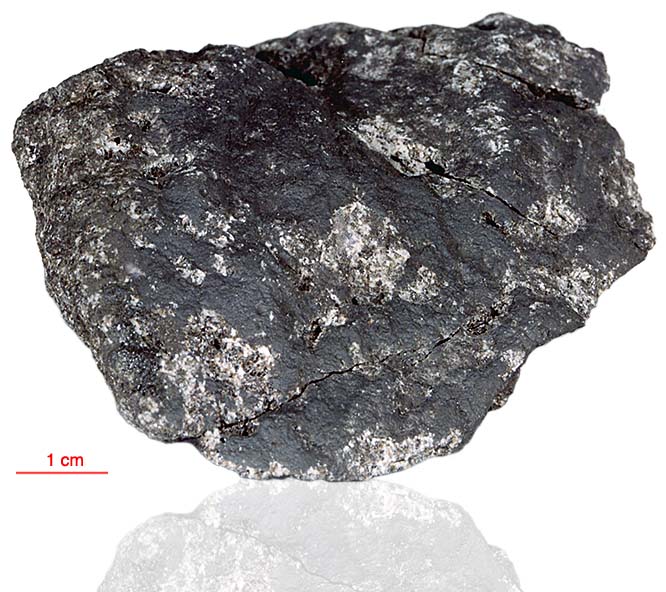
Fact sheet
70135 is a vesicular high-Ti basalt typical of the Apollo 17 site. It has been described as plagioclase-poikilitic. Small olivine grains are found poikilitically enclosed in pyroxene and plagioclase. Rare armalcolite is found poikilitically enclosed in pyroxene. Silicate melt inclusions occur trapped in ilmenite. Metallic iron and troilite are found in the groundmass. Silica-rich regions are shown in the two rotations.
The sample weighed 446 grams before analysis and has been dated at 3.77±0.06 billion years (Sm/Nd).
Further details of this and other Apollo samples are here: http://curator.jsc.nasa.gov/lunar/
Apollo 17, the final manned landing mission, had two objectives: to obtain samples of ancient rocks from the lunar highlands and to look for evidence of younger volcanic activity on the valley floor.
This small Collection contains material deriving from both periods, including igneous rocks around 4.3 billion years old from the lunar highlands as well as younger volcanic samples dating from about 3.6 billion years ago.
Apollo 17 was launched on 7 December 1972.






